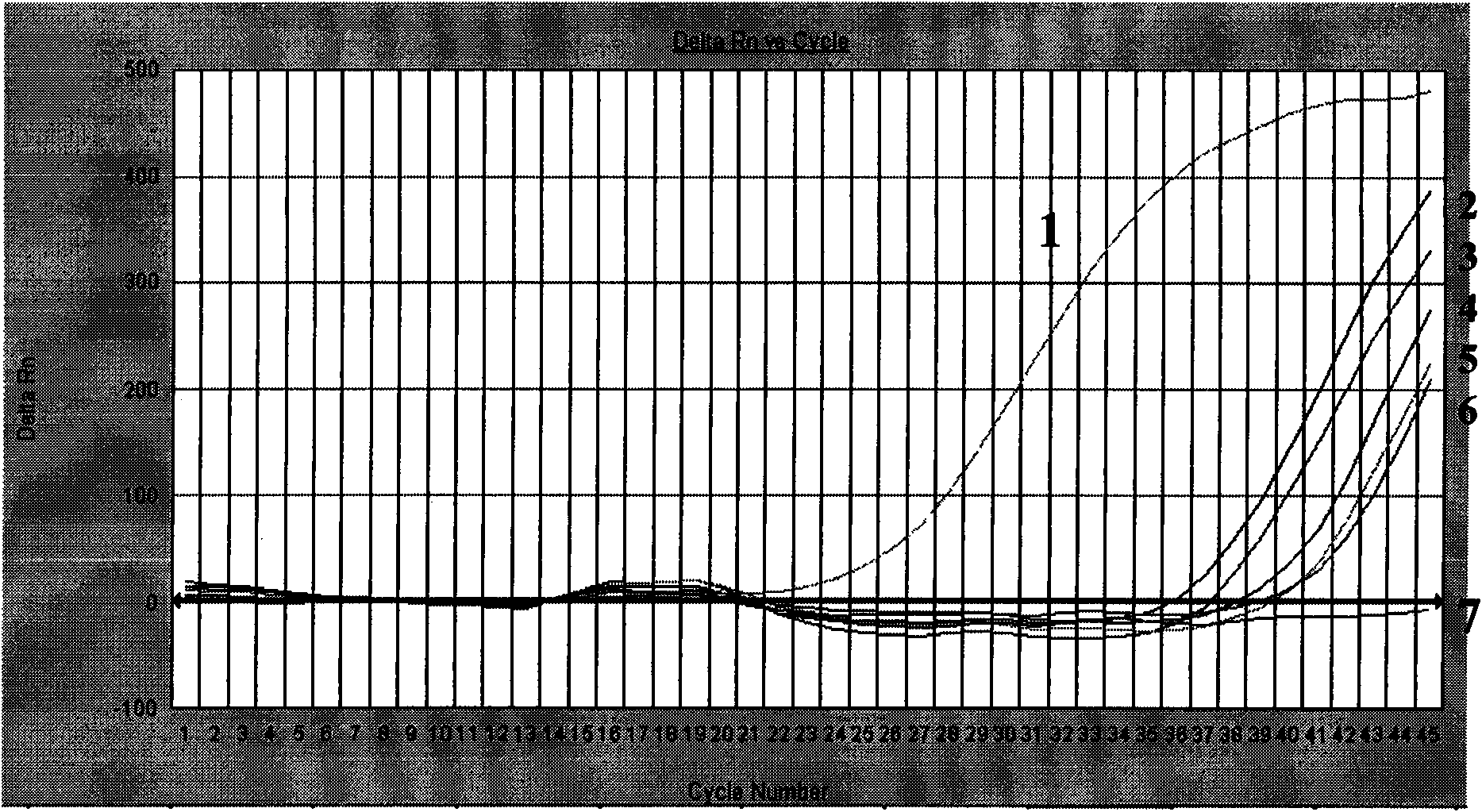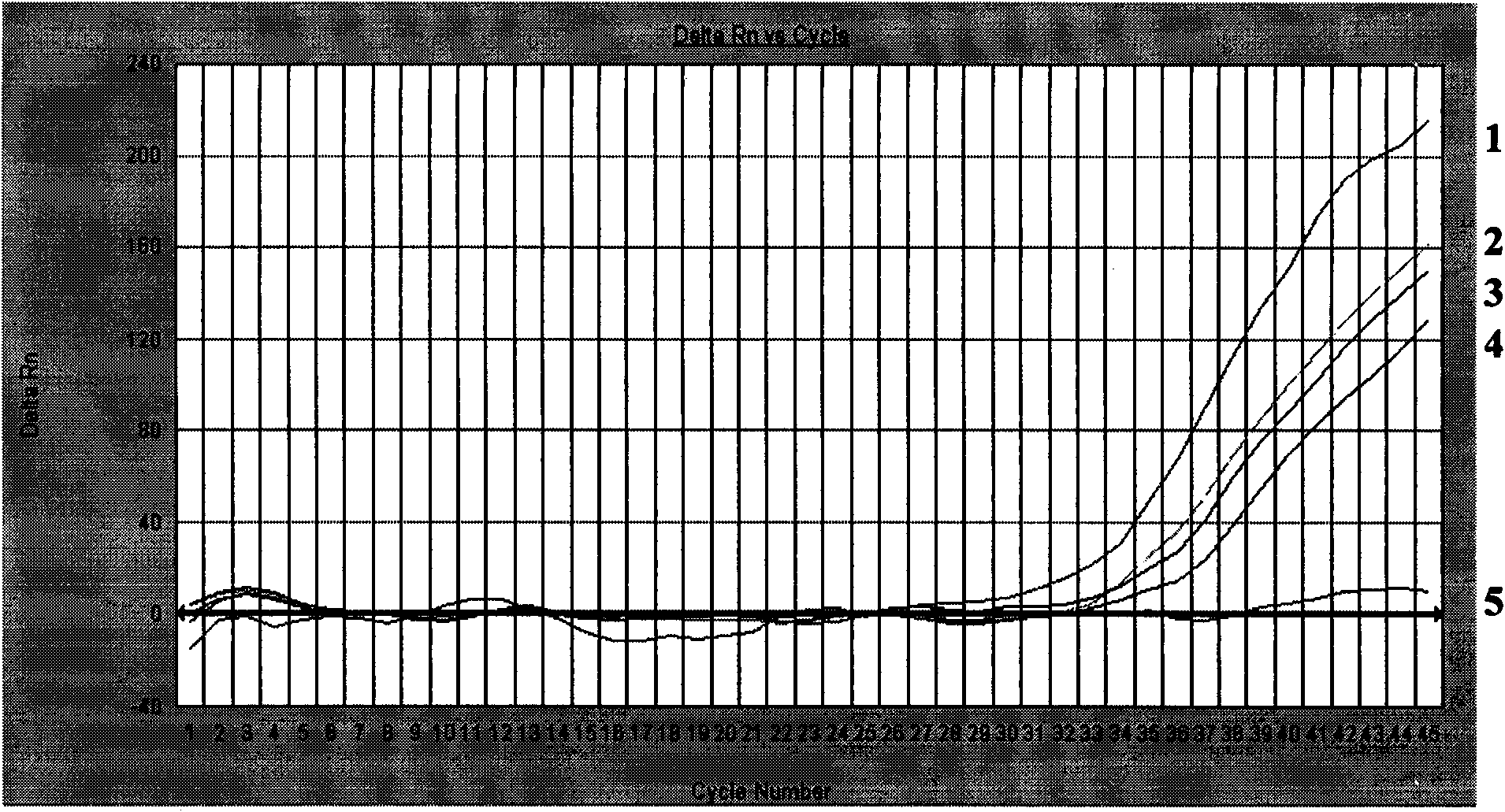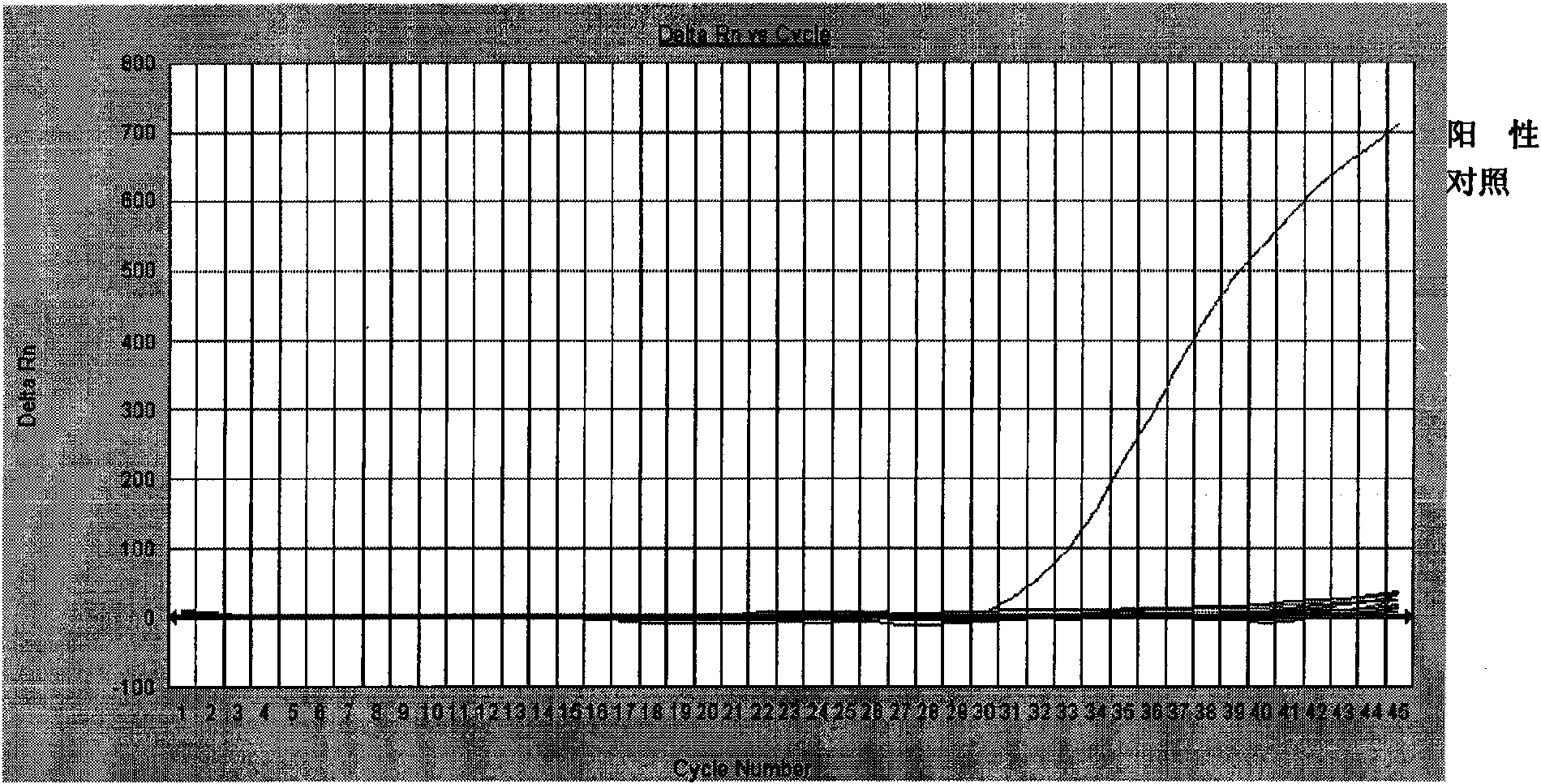Method for detecting allergen almond component in foods by fluorescent PCR technology
A technical detection and allergen technology, which is applied in the field of allergen almond ingredients in food, can solve the problems of undetectable and non-specific primer sequences, and achieve the effect of saving time, avoiding complicated processing and less interference
- Summary
- Abstract
- Description
- Claims
- Application Information
AI Technical Summary
Problems solved by technology
Method used
Image
Examples
Embodiment 1
[0041] Sample: Almond-free chocolate as an added base. Take 1g of ground almonds and add them to 99g of chocolate in a 40°C water bath to melt, stir for 30min, and mix well. Take 3g of the above-mentioned chocolate added with almonds and add it to 27g of chocolate, so as to continuously dilute, and finally make chocolates containing 1000mg / kg, 100mg / kg, 20mg / kg, 10mg / kg, and 5mg / kg of almonds.
[0042] 1. Sample Processing
[0043] (1) Take 300mg samples respectively, put them into 1.5mL centrifuge tubes, add 600μL CTAB buffer solution (CTAB 55mmol / L, EDTA20mmol / L, Tris 100mmol / L, adjust the pH value to 8.0 with 10% hydrochloric acid), 15μL (20mg / L ml) Proteinase K, incubate at 65°C for 30 minutes; add 500 μL of phenol: chloroform: isoamyl alcohol (25:24:1) mixture and shake vigorously, centrifuge at 12000 rpm for 15 minutes; absorb the supernatant and add an equal volume of isopropanol, shake vigorously Centrifuge at 12000rpm for 10min, discard the supernatant; dissolve wit...
Embodiment 2
[0072] Sample: International Almond Allergen Reference Substance 40mg / kg, 20mg / kg, 10mg / kg, 5mg / kg
[0073] 1. Sample Processing
[0074] (1) Take 300mg samples respectively, put them into 1.5mL centrifuge tubes, add 600μL CTAB buffer solution (CTAB 55mmol / L, EDTA 20mmol / L, Tris 100mmol / L, adjust the pH value to 8.0 with 10% hydrochloric acid), 15μL (20mg / ml) Proteinase K, incubate at 65°C for 30 minutes; add 500 μL of phenol: chloroform: isoamyl alcohol (25:24:1) mixture and shake vigorously, centrifuge at 12000 rpm for 15 minutes; absorb the supernatant and add an equal volume of isopropanol, shake vigorously Centrifuge at 12000rpm for 10min, discard the supernatant; dissolve with 200μLTE (the amount of TE depends on the amount of DNA precipitated); add an equal volume of chloroform: isoamyl alcohol (24:1) mixture and shake vigorously, centrifuge at 12000rpm for 15min; absorb the supernatant Add an equal volume of isopropanol, shake vigorously and centrifuge at 12,000 rpm ...
Embodiment 3
[0101] Samples: almonds; nuts such as peanuts, hazelnuts, chestnuts, walnuts, pine nuts, summer fruits; fruits such as apples, pears, bayberry, plums.
[0102] 1. Sample Processing
[0103] (1) Take 300mg samples respectively, put them into 1.5mL centrifuge tubes, add 600μL CTAB buffer solution (CTAB 55mmol / L, EDTA 20mmol / L, Tris 100mmol / L, adjust the pH value to 8.0 with 10% hydrochloric acid), 15μL (20mg / ml) Proteinase K, incubate at 65°C for 30 minutes; add 500 μL of phenol: chloroform: isoamyl alcohol (25:24:1) mixture and shake vigorously, centrifuge at 12000 rpm for 15 minutes; absorb the supernatant and add an equal volume of isopropanol, shake vigorously Centrifuge at 12000rpm for 10min, discard the supernatant; dissolve with 200μL TE (the amount of TE depends on the amount of DNA precipitated); add an equal volume of chloroform: isoamyl alcohol (24:1) mixture and shake vigorously, centrifuge at 12000rpm for 15min; absorb the supernatant Add an equal volume of isopro...
PUM
| Property | Measurement | Unit |
|---|---|---|
| Sensitivity | aaaaa | aaaaa |
Abstract
Description
Claims
Application Information
 Login to View More
Login to View More - R&D
- Intellectual Property
- Life Sciences
- Materials
- Tech Scout
- Unparalleled Data Quality
- Higher Quality Content
- 60% Fewer Hallucinations
Browse by: Latest US Patents, China's latest patents, Technical Efficacy Thesaurus, Application Domain, Technology Topic, Popular Technical Reports.
© 2025 PatSnap. All rights reserved.Legal|Privacy policy|Modern Slavery Act Transparency Statement|Sitemap|About US| Contact US: help@patsnap.com



